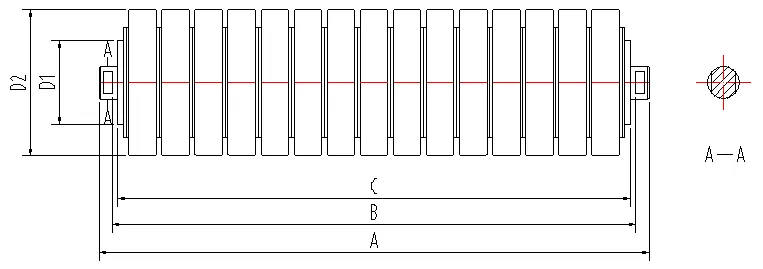 Afrikaans
Afrikaans  Albanian
Albanian  Amharic
Amharic  Arabic
Arabic  Armenian
Armenian  Azerbaijani
Azerbaijani  Basque
Basque  Belarusian
Belarusian  Bengali
Bengali  Bosnian
Bosnian  Bulgarian
Bulgarian  Catalan
Catalan  Cebuano
Cebuano  Corsican
Corsican  Croatian
Croatian  Czech
Czech  Danish
Danish  Dutch
Dutch  English
English  Esperanto
Esperanto  Estonian
Estonian  Finnish
Finnish  French
French  Frisian
Frisian  Galician
Galician  Georgian
Georgian  German
German  Greek
Greek  Gujarati
Gujarati  Haitian Creole
Haitian Creole  hausa
hausa  hawaiian
hawaiian  Hebrew
Hebrew  Hindi
Hindi  Miao
Miao  Hungarian
Hungarian  Icelandic
Icelandic  igbo
igbo  Indonesian
Indonesian  irish
irish  Italian
Italian  Japanese
Japanese  Javanese
Javanese  Kannada
Kannada  kazakh
kazakh  Khmer
Khmer  Rwandese
Rwandese  Korean
Korean  Kurdish
Kurdish  Kyrgyz
Kyrgyz  Lao
Lao  Latin
Latin  Latvian
Latvian  Lithuanian
Lithuanian  Luxembourgish
Luxembourgish  Macedonian
Macedonian  Malgashi
Malgashi  Malay
Malay  Malayalam
Malayalam  Maltese
Maltese  Maori
Maori  Marathi
Marathi  Mongolian
Mongolian  Myanmar
Myanmar  Nepali
Nepali  Norwegian
Norwegian  Norwegian
Norwegian  Occitan
Occitan  Pashto
Pashto  Persian
Persian  Polish
Polish  Portuguese
Portuguese  Punjabi
Punjabi  Romanian
Romanian  Russian
Russian  Samoan
Samoan  Scottish Gaelic
Scottish Gaelic  Serbian
Serbian  Sesotho
Sesotho  Shona
Shona  Sindhi
Sindhi  Sinhala
Sinhala  Slovak
Slovak  Slovenian
Slovenian  Somali
Somali  Spanish
Spanish  Sundanese
Sundanese  Swahili
Swahili  Swedish
Swedish  Tagalog
Tagalog  Tajik
Tajik  Tamil
Tamil  Tatar
Tatar  Telugu
Telugu  Thai
Thai  Turkish
Turkish  Turkmen
Turkmen  Ukrainian
Ukrainian  Urdu
Urdu  Uighur
Uighur  Uzbek
Uzbek  Vietnamese
Vietnamese  Welsh
Welsh  Bantu
Bantu  Yiddish
Yiddish  Yoruba
Yoruba  Zulu
Zulu Exploring Various Conveyor Roller Types and Their Applications in Industry
Different Types of Conveyor Rollers A Comprehensive Overview
Conveyor rollers play a crucial role in material handling systems across various industries. These cylindrical components are designed to facilitate the movement of goods, from heavy pallets in warehouses to delicate products in manufacturing processes. The effectiveness and efficiency of a conveyor system often hinge on the choice of rollers. In this article, we will explore the different types of conveyor rollers and their applications.
1. Standard Rollers
Standard rollers are the most commonly used type in conveyor systems. Typically made from steel or plastic, they are designed to support the weight of the conveyed materials while allowing for smooth movement along the conveyor belt. Standard rollers can be either straight or tapered, depending on the application. They are widely used in industries such as warehousing, packaging, and general manufacturing due to their versatility.
2. Impact Rollers
Impact rollers are designed to handle heavy loads and severe conditions, particularly at loading zones. Constructed with a thicker and more robust design than standard rollers, they are equipped with a rubber cover that helps absorb shock and reduce wear and tear. This makes them ideal for operations that involve heavy machinery or the frequent transfer of bulky items. Their durability promotes longevity and reduced maintenance costs, making them a valuable asset in any heavy-duty conveyor system.
Guide rollers help to keep the conveyor belt aligned as it traverses from one point to another. They are essential for preventing misalignment and ensuring that products move smoothly along the conveyor system. Guide rollers can be adjustable and are typically used in curves, inclines, and declines within conveyors. By maintaining proper alignment, they contribute to the overall efficiency of the material handling process.
different types of conveyor rollers

4. Idler Rollers
Idler rollers are typically used to support the conveyor belt and maintain its tension. These rollers do not receive any drive power but are crucial for maintaining the proper shape and alignment of the belt. Idler rollers come in various designs, including flat and grooved profiles. They can also vary in material, with options ranging from metal to plastic, depending on the specific requirements of the application.
5. Driven Rollers
Driven rollers are powered rollers that receive energy from a motor or drive system. They are used in powered roller conveyors where the movement of goods occurs through the rollers themselves rather than through a belt. Driven rollers can be controlled independently, allowing for more flexible system design and layout. They are prevalent in applications that require controlled movement, such as sorting systems or automated assembly lines.
6. Specialty Rollers
Specialty rollers are designed for specific applications and may have unique properties. Examples include stainless steel rollers for food processing industries, anti-static rollers for handling electronic components, and friction rollers that provide added grip for specific items. These rollers are engineered to meet unique operational challenges and ensure the safe and efficient transport of goods.
Conclusion
The selection of the appropriate type of conveyor roller is essential for optimizing operational efficiency, reducing downtime, and maximizing productivity in material handling systems. Understanding the differences among standard, impact, guide, idler, driven, and specialty rollers allows businesses to make informed decisions that meet their specific needs. As technology evolves, so too will the designs and materials used in conveyor rollers, further enhancing their capabilities and applications across diverse industries. Choosing the right roller not only facilitates effective movement but also ensures the longevity and reliability of the entire conveyor system.
-
Trusted Conveyor Solutions from Leading Conveyor Idler Roller ManufacturersNewsJun.27,2025
-
Reliable Return Idler Solutions for Efficient Belt Conveyor SystemsNewsJun.27,2025
-
Precision Conveyor Accessories for Streamlined Material HandlingNewsJun.27,2025
-
High-Quality Belt Conveyor Idler Solutions for Efficient Material HandlingNewsJun.27,2025
-
High-Performance Belt Conveyor Pulleys for Reliable Material HandlingNewsJun.27,2025
-
Enhancing Material Handling EfficiencyNewsJun.27,2025





























